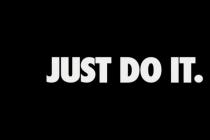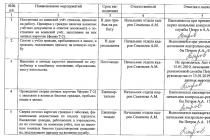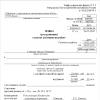rate. To achieve values - goals, each corporation chooses its own system of values - means, the most common are honesty, respect, improvement, innovation.
Using information about corporate values, management can formulate a list of value orientations that are fixed in the value portrait of the "ideal" employee and in the best possible way to achieve corporate goals. All identified elements must be presented in the form of a value system: values - goals; - values - means - value orientations of the ideal worker.
The need to improve the efficiency of the corporation in modern conditions requires the identification of real value orientations that its employees possess. Value orientations ensure the stability of the individual, the continuity of a certain type of behavior and activity and are expressed in the direction of needs and interests, act as a measure of the sociality of the individual, because of these features they have a major impact on the value system of the company.
Consistency of value orientations determines such personality traits as integrity, reliability, loyalty to certain principles and ideals, the ability to make strong-willed efforts in the name of these ideals and values, activity life position; the inconsistency of value orientations gives rise to inconsistency in behavior. Value orientations set the general direction for the interests and aspirations of the individual; a hierarchy of individual preferences and patterns; targeted and motivational programs; level of claims and prestige preferences; concept of proper behavior patterns. Value orientations, being a mechanism personal growth and self-development, are themselves developing and dynamic. If their existence is not supported by the environment, then they are gradually lost. Acceptance and development of corporate values is a long and lengthy process: awareness corporate values generates value representations, and value orientations are created on their basis.
Literature
1. Groshev I.V., Yuriev V.M. Management of organizational culture. - M.-Voronezh: Ed. NPO "MODEK", 2010.
2. Nezamaykin I.V. Value Management and Modernization // Bulletin of the University. - M.: GUU, 2012. - No. 17.
Z.P. Rumyantsev
ON APPROACHES TO UNDERSTANDING THE ESSENCE OF STRATEGY AND STRATEGIC MANAGEMENT
Annotation. Some results of scientific research on the topic "Evolution of the key concepts of management" carried out in 2012 are summed up. The study of the evolution of concepts associated with the keyword "Strategy" was carried out in the following areas: the essence of the strategy; economic foundations of the strategy; problems of strategy formulation; strategic planning and strategic management.
Keywords. Strategy, economic fundamentals, strategic planning, strategic management.
© Rumyantseva Z.P., 2013
Consideration of the essence of the strategy, which determines its composition and content, made it possible to identify definitions that are consistent with the opinions of a large number of management theorists and practitioners who study these issues in the context of a market economy.
According to M. Porter, strategy is a difficult choice that determines how a company will achieve high results in competitive conditions. The essence of strategy is defined by him as the choice of what the organization should not do. The strategy should show how the organization in a competitive environment will be able to get better results compared to competitors. Strategy is the positioning that a company chooses and the result of which is the achievement of its goal. Positioning becomes a reality by carrying out appropriate actions (activities).
In accordance with the definition given by W. Peterson, a strategy is a set of an organization's choices about where it will compete, how it will create higher value for consumers and how it will provide an appropriate return on invested capital.
In the work of W. Peterson, key questions are highlighted that the strategy should answer:
Where will the company compete (in which markets, to satisfy which customer groups, what value does it offer to customers);
Target setting of the strategy (what parameters will be used to evaluate the result);
Approaches to achieve goals (differences compared to competitors);
Key priorities of the company (concentration of resources in order to achieve results).
Competition as the economic basis of strategy is the subject of research by many authors, emphasizing the peculiarity of competition in modern conditions. According to M. Porter, this is one of the most important factors causing the need to develop a strategy. Competition encompasses not only relationships between competing organizations, but also between a company and its customers, suppliers, substitute manufacturers, and new potential competitors.
Competitive advantage - in the definition of M. Porter - is inextricably linked with the economics of competition. For commercial organizations is profit and results. To determine them, it is recommended to analyze the factors that led to the increase in profits (higher prices, low costs, or a combination of both), as well as clearly formulate the parameters by which the results of the strategy are evaluated. Attention is drawn to the fact that such statements as “to get better results”, “to be the best company" and so on. The goals of the strategies of commercial companies are not to defeat opponents, but to maximize the return on the resources used (first of all, to earn as much profit as possible).
For non-profit organizations, competitive advantage means producing more value for society for every dollar spent, or producing the same value at less cost.
The basic elements of competitive advantage are the types of activities a company performs and the entire value chain.
The position of M. Porter is questioned by a number of authors who believe that the idea of competition in the new business environment outdated because it reflects the manic pursuit of return on equity. Under the new conditions, Christopher Meyer and Julia Kribi note in the article "Failure in the Evolution of Capitalism":
it is necessary to create other rules for capitalism. In their opinion, it is necessary to develop and maintain cooperation as a very promising source of innovation in our newly connected world. Capitalism will be able to develop in evolution, having found new guidelines for itself, coinciding with the main goals of society. If as economic basis accept innovations and projects, then competition recognizes the advantages of cooperation, and the mission of the company (and this is its soul) can be defined as creating the greatest good for largest number individuals. The idea of profitability, the authors believe, remains, but not in the first place.
The idea of new approaches to the essence of strategy in the new conditions of development of capitalism is substantiated by Raizberg B.A., Lozovsky L.Sh. and Starodubtseva E.B. emphasizing the role social responsibility corporations. In their opinion, modern capitalism is oriented towards social goals, scientific and technological progress, and is based on achieving the interest of workers in labor and the results of labor. Capital becomes not only a factor in making profit, but also in social progress, and capitalism takes on the features of a socially oriented economy.
The connection between competitive advantage and corporate social responsibility is also recognized by M. Porter in an article jointly with M. Kramer. However, the authors note that the actions of companies in this direction are purely cosmetic in nature, being a response to the opinions of the public and the media. mass media. But in practice, companies are most often limited to publishing social responsibility reports that describe what is being done in general, with no obvious connection to the business. According to the authors, integration is necessary social aspects With key business, its practice and strategy, and for this it is necessary to create socially integrated corporations. At the same time, corporations should not be responsible for all the world's problems, and they do not have necessary resources. Each company must define specific social problems in which it can take part and, as a result, gain a huge competitive advantage.
Strategy formulation problems arise due to the fact that many managers cannot clearly and unambiguously formulate the company's strategy. This pattern is observed at all levels of the hierarchy - from top to bottom, and this negatively affects not only the development, but also the implementation of the strategy. What is needed is a simple, clear and concise formulation that allows each employee to understand and perceive the strategy, using it as a guide in times of difficult choices.
There are three critical elements of strategy formulation: goals, format (borders) and benefits (benefits, benefits).
When determining the final results (goals) that are supposed to be obtained, it is necessary to accurately determine the period of time required for this. It is recommended to strictly observe a certain hierarchy of statements related to the goals of companies: mission, values, vision and strategic goals development. The latter show what the company's competitive plan for certain period time.
Establishing the format (framework) of business in the conditions of developed competition involves three dimensions of the boundaries of the company's actions: client or offer, geography and vertical integration. Clearly defining boundaries in these areas shows managers what activities to focus on and, just as importantly, what not to do. The framework of the enterprise does not give a precise prescription of what must be done within the described boundaries. In fact, they encourage experimentation and initiative.
The essence of the strategy express it competitive advantages. They contain complementary external and internal components: the value proposition,
explaining why target consumers should buy exactly your product from all options choice, as well as a description of how internal activities will be arranged to provide the customer with the value proposition. How your business will be different from others or what you will do better than others will determine the means by which you are going to achieve your goals. Being clear about what distinguishes a firm from others helps employees understand how they contribute to the successful execution of the strategy.
Strategic planning played a different role at different stages of strategy development. In the 1960s and 1970s, it was a central element scientific approach to management. This was largely facilitated by the work of A. Chandler and I. Ansoff. In them, for the first time, strategy was associated with the organization of the company's activities. According to I. Ansoff, strategy refers to organizational development, since the main thing for her is the market and the prospects of the company. This approach to strategy as planning meant that strategies could be developed as a result of the planning procedure, and the strategy of a corporation could be represented as a set of long-term goals and the allocation of resources for their implementation.
This period is characterized significant changes in the role of specialized strategic planning services that developed long-term development plans for the organization, its divisions and services. It was they who determined the content of the strategy. In the process of large-scale use of this strategy-forming tool, planning has become a routine, formalized process, carried out annually, time-consuming and costly (the scale of this work, as a rule, required the involvement of consultants) and not always related to the real needs of the organization.
In the 1980s, influenced by the increasing dynamism and complexity environment companies have been forced to frequently review development goals and, consequently, strategies to achieve them. Planning, as an integral part of the strategy formation process, lost its meaning, and companies began to gradually move towards the formation of a strategy, the basis of which is the "vision".
According to W. Peterson, the connection between strategy and strategic planning at the present stage can be expressed by the golden rule: first strategy, then strategic planning.
The differences between these concepts are presented in Table 1.
Table 1
Differences between the concepts of "strategy" and "strategic planning"
Strategy Strategic planning
Determines where to compete and how to win in competition Ensures order and discipline
Defines best picks Determines how to translate strategy into action, but does not shape it
Intensifies efforts at vital business positions Creates forecasts, budgets and logistical dependencies
State Committee Russian Federation By
higher education
State Academy of Management
named after Sergo Ordzhonikidze
ORGANISATION MANAGEMENT
Tutorial
Ed. Doctor of Economics, prof. Z.P. Rumyantseva,
A.E.N., prof. N.A, Salomatina
Moscow
INFRA-M
1995
BBK 65.050.9(2)2
Authors: Rumyantseva Z.P., Salomatin N.A.,
Akberdin R.Z., Gunin V.N., Kibanov A.Ya.,
Turusin Yu.D.. Ustinov V.A.
Organisation management. Tutorial. blush
Tseva Z.P., Salomatin N.A., Akberdin R.Z. and others - M:
INFRA-M. 1995. - 432 p. b.
ISBN 5-86225-136-7V
5
A new economic system that is being formed under the conditions
transition of the domestic economy to the market, needs a specialist
sheets with extensive and deep knowledge in the field
modern management. There is a particularly acute need for
such specialists in organizations, since in a relatively short
term, they must create a management system,
providing high efficiency, competitiveness and
market stability. IN study guide, prepared
by scientists of the State Academy of Management, considered
issues that are of paramount importance for the specialist
sheets - managers of organizations: the basics of the general process of management
organization and its personnel, conditions and factors of formation
strategic management, organization of innovative
management. The essence of production management is revealed.
ment as a system that organizes internal production in a new way
military economic relations.
The textbook will provide real help to students and graduate students.
rants studying the problems of organization management, as well as
professionals involved in the formation new system pack-
management.
ISBN 5-86225-136-7
BBK 65.050.9(2)2
© Team of authors, 1995 ©
INFRA-M, 1995
Table of contents
Foreword ........................................ in
1. Fundamentals of organization management ........................ 10
1.1. Introduction to Management.............................. 10
1.1.1. What is management. ........"................. 10
1.1.2. Management and managers.............................. 13
1.1.3. Development of the theory and practice of management .......... 19
1.1.4. Modern system views on management...... 28
1.1.5. Changing the management paradigm in the period of radical
transformations in the economy of the Russian Federation. 34
1.2. Goals and functions of management .................. . 39
1.2.1. Mission of the organization.............................. 39
1.2.2. The goals of the organization and their classification .............. 42
1.2.3. Management by objectives (results). ............... 48
1.2.4. Management Functions .............................. 52
1.3. Decision-making process and methods .............................. 58
: 1.3.1. Basic elements of the decision-making process.... 58
" 1.3.2. Management methods .......................... 68
1.4. The structure of the organization's management ........ 81
1.4.1. Definition of the concept and principles of construction. ...... 81
1.4.2. Hierarchical type of management structures............. 83
1.4.3. Organic type of management structures .............. 91
Chapter 1 Checklist .............................. 100
Z Strategic management.............................. 103
2.1. General concept .............................. 103
2.2. Strategy planning ........................................ 114
2.3. Analysis of alternatives and choice of strategy ............... 128
2.4. Strategy Implementation Management .................................. 141
2.5. Organization management structure focused on
for solving strategic problems ........... 149
Chapter 2 Checklist .............................. 157
3. Innovation management.............................. 158
3.1. Innovation as an object innovation management 158
3.1.1. Governmental support innovative
activities ................................ 175
3.2. Examination of innovative projects ............... 184
3.2.1. Innovation project concepts, basic
stages of creation and implementation................... 184
3.2.2. Efficiency of the innovative project .......... 189
3.2.3. Selecting an Alternative.............................. 194
3.3. Consolidated assessment of the costs of innovative
processes....................................... 207
3.3.1. The concept of organization of scientific and technical
activities at the stage of applied research
and developments. ................................. 207
3.3.2. Costs for the main intermediate stages
R&D .................................................. 211
3.3.3. Investments in the development of production
new products.............................. 216
3.4. Determination of commercial risk when investing in
innovative activity and methods of its reduction
......................... 221
3.4.1. Identification of the actual effectiveness of the work of scientific and
technical organizations and the commercial risk of the investor.
............... 221
3.4.2. Business Risk Mitigation Methods
investment in innovation activities ........ 226:
3.4.3. The development of competition in scientific and technical
And innovation activities.................. 233
Chapter 3 Checklist ............................. 239
4. Production management ........................... 241
4.1. Organization economic relations
in a joint-stock company ........................ 241
4.2. The formation of market relations .................... 251
4.3. Contractual relations in a joint-stock company. . . 264
4.4. Manufacturing control. System View.. 273
4.4.1. Production as an object of control............. 273
4.4.2. Goals and objectives of production management. ......... 277
4.4.3. Production control process ............... 279
4.4.4. Production Control Functions ...................... 282
4.4.5. Structure and interconnection of system elements
production management ........................ 289
4.4.6. Information Support systems ........... 290
4.4.7. Technical and software systems. . . 294
4.4.8. Organization of production management ........... 297
4.5. Formation production programs.......... 300
4.5.1. System of production programs .............. 300
4.5.2. Methodological provisions for the distribution of the program
production of products according to the planned periods of the year for assembly
workshops .............. 305
4.5.3. Methodological provisions for the formation of the nomenclature
calendar plans for the release of assembly units and parts for
processing and procurement workshops
....................... 311
4.5.4. Methodological provisions for the formation of production
programs for processing shops ..................................
313
4.6. Operational production management ...................... 335
4.6.1. The main methodological provisions for the development
operational calendar plans .................. 336
4.6.2. Basic provisions for the organization of control
and regulation of the course of production .............. 352
Chapter 4 Checklist ........................... 361
5. Personnel management.............................. 363
5.1. The concept of personnel management in an organization ..... 363
5.2. Principles and methods of building a control system
the organization's personnel .......... 371
5.3. Management of work with personnel in the organization ..... 384
5.3.1. The essence, goals and objectives of personnel planning. . . 384
5.3.2. Operational plan of work with personnel .......... 388
5.4. Management of a business career in an organization ......... 399
5.4.1. The concept and stages of a career ....................... 399
5.4.2. Business Career Management.............................. 407
5.5. Management of service and professional
promotion of personnel in the organization .............. 410
5.5.1. system of service and professional
promotions ................................ 410
5.5.2. Work with personnel reserve.................... 420
Chapter 5 Checklist ........................... 423
References ............................... 425
FOREWORD
Radical restructuring of the economic management system,
transitioning to market relations. - one of the important
the most important directions of the program of reforms carried out in our
country. This problem is of particular importance at the level of
acceptance, whose position in market economy is changing
drastically. Becoming the object of commodity-money
carrying, having economic independence and
fully responsible for the results of their business
activity, the enterprise must form a system
management (management), which would provide him with high
which work efficiency, competitiveness and sustainability
the stability of the market position.
The very term "enterprise" after the adoption of the Civil
Code of the Russian Federation (Part I) has undergone significant
changes. It is reserved only for a group of enterprises,
owned by the state or municipality.
Bc& others legal entities got the name
organizations, which are divided into two groups: commercial
- the main purpose of their activity is to make a profit,
non-commercial - their main purpose is not related to the extraction and
distribution of profits among participants. civil
The code also defines the forms in which
organizations. For commercial organizations, these are: economic
partnerships (associations of persons requiring direct
participation of founders in entrepreneurial activity),
business companies(combinations of capital that do not require
direct participation of founders in entrepreneurial
activities, but assuming the presence of special bodies
management), joint stock v companies (open and closed),
production cooperatives (characterized by personal
the participation of members-shares- --d. kov in labor and in the management of
the principle of "one shareholder - one A vote", the distribution of income
with obligatory consideration of the nature and degree of 1 labor participation
each shareholder) and | I
for which, as already mentioned, in the Civil Code
the organizational and legal form of the "enterprise" is stored, taking into account
their a large number and developed over the years of domination of the former
control systems of stereotypes and traditions. The term "unitary
enterprise" emphasizes the indivisibility of property
state enterprises, which belongs entirely to
the responsible public owner. Non-commercial
organizations are formed in the form consumer cooperatives,
public and religious organizations (associations), foundations and
institutions.
This broad interpretation of the term "organization" is accepted in
this tutorial, the main theoretical, methodological
logical and practical provisions and recommendations of which
can be applied both in commercial and non-
commercial organizations. In doing so, it should be taken into account that
compared to the system of government still in place.
in many organizations, in the new conditions, functions appear,
that were not needed before. In a market economy
the organization itself makes decisions that were previously
the prerogative of higher authorities. She is self-
clearly forms goals and objectives, develops a strategy and
policy of its development, finds the necessary for their re-
funds, recruits workers, acquires equipment
technology and materials, solves many structural issues, in
including such as the creation, liquidation, merger or
on the contrary, the division of divisions and branches, entry into
composition of associations and other associations, reorganization
production and restructuring organizational structure
management and many others.
In short, organizations acquire all the features of independence,
typical for market conditions. And this requires
significant expansion of the sphere of management and self-government,
increase in the volume and complexity of the nature of the performed
work managers. The responsibility for
timeliness and quality of decisions made. rises
role marketing research, allowing to study the dynamics
needs in the market for goods and services. Scientific and technical
progress becomes one of the tools of managerial
innovations aimed at creating conditions for
effective work. It is gaining more and more importance
solving issues related to personnel management,
occupying in new conditions key position in resource
potential and essentially predetermining the success of the organization
in achieving her goals. Production management,
providing sustainable management arbitrarily
in a dynamically changing environment, also
walks on new principles of organization.
Management of an organization operating in a market environment,
makes high demands on the professionalism of management
lazy staff. The modern manager is a person
who owns both the general foundations of management science and the specific
technical knowledge and skills in the field of management strategy,
innovation, marketing, personnel management and
leadership. In essence, this predetermined the structure of the educational
manuals, the team of authors of which set themselves
the goal is to give the reader the knowledge necessary to implement
the overall process of managing the organization and its personnel, and
to work in the field of strategic, innovative and
production management.
Having become acquainted with the materials of the first chapter, the reader
get an idea of what modern management is
ment, what goals and objectives he sets and decides what functions
he performs as he modifies organizational structures
control tours to improve flexibility and efficiency
management. The reader's attention will undoubtedly be attracted by
rials. in which questions of the organization of pro-
adoption process management decisions and methods that
while being used.
The second chapter is devoted to the theory, methodology and
strategic management practices in a commercial organization
organizations. It outlines the general concept of the strategic
management, the processes of strategy planning are considered, and
also methods for developing its individual stages. The reader
gets acquainted with the main methodological approaches to the analysis and
choice of strategy firms to manage its implementation and
distribution of strategic resources. Due attention
is given here to the organization of work on the development
strategies that will undoubtedly help practitioners
choose organizational forms, to the greatest extent
corresponding to specific production conditions.
The third chapter discusses the main provisions of the innovation
management, expertise of innovative project-
goods, features of applied research
body works (R&D) and intermediate stages of implementation
experimental design developments (R&D), according to which
evaluation of innovative activity is carried out. Drawn down
readers’ desire for a significant increase in investment in technology
logical development of the production of competitive products
compared to research and development costs.
In order to reduce the commercial risk of the investor, disclosed
methods of competitive direction of innovation activity
taking into account the actual performance of scientific and technical
organizations and the principles of its extrapolation to
perspective. It is shown that the development of competition has a
significant impact on increasing the role of intellectual property
veinity as one of the most important components of innovation
vation processes and its significance.
The fourth chapter of the tutorial is devoted to the problems
production management. The focus of the authors
turned out to be issues of organizing intra-production eco-
nomic relations in joint-stock companies ah and incoming
of them production units. In this regard, in detail
the essence and organization are considered contractual relations
between business units. For production
subdivisions of joint-stock companies and state
unitary enterprises can be of great benefit
familiarization with materials that reveal the main organizations
organizational and methodological solutions for the management of
guidance in the system view.
The fifth and final chapter of the tutorial is devoted to
problems of personnel management - the key moment of the entire
restructuring of the management system in any organization. Here
the reader will find the answer to such questions as: the concept of
management of personnel in market conditions, principles and methods
building a personnel management system in an organization,
structure operational plan as the basis of the personnel plan
nirovaniya in the organization. Considerable attention is also paid to
questions of business career management and service and professional
promotion in the organization.
The following people took part in writing the textbook: Doctor of Economics,
prof. Rumyantseva Z.P. (ch. 1), Ph.D., prof. Turusin Yud. (ch. 2),
Doctor of Economics, prof. Ustinov V.A. (§ 3.3 and 3.4 ch. 3), Ph.D., prof. Gunin
V.N (§ 3.1 and 3.2 Ch. 3), Doctor of Economics, Prof. Akberdin R.Z. (§ 4.1, 4.2, 4.3
ch. 4), Doctor of Economics, prof. Salomatin N.A. (§ 4.4, 4.5, 4.6 Ch. 4), Doctor of Economics,
prof. Kibanov A.Ya. (ch. 5).
1. BASICS OF MANAGEMENT
ORGANIZATIONS
production and its profitability^
Most used
approaches to defining the essence and
content of management in
special managerial
terature are presented in Figs. 1.1.
Function
(view
activity)
Science and
art-
stvo
Management
determined
How:
Authority or
apparatus
managed
Category
of people
1.1. Introduction to Management
1.1.1. What is management?
^Management of organizations in a market economy
nomics is much more complicated than in a centralized
command and control system. This is related to both
expansion of their rights and responsibilities, and with the necessary
the ability to adapt more flexibly to changes in the environment
living environment. New goals and objectives emerge
Previously, organizations did not independently decide and did not even
set; many new businesses are being created; influenced
privatization processes change forms of ownership;
new economic ties are being established; formed
market mechanisms of management. All arising in
Therefore, problems cannot be solved without
contemporary professional management. More
Moreover, as the new social and
economic relations, its role will grow, as
management is powerful engine and accelerator
social development.
Using the concept of "management", we have been following for a long time
established tradition in world literature on
management, giving it a very broad interpretation. Yes, in
Fundamental Oxford English Dictionary
language management is defined as: way, manner
dealing with people; power and art of management;
a special kind of skill and administrative skills; organ
management, administrative unit. In dictionary
foreign words" management is translated into Russian
language as production management and as a set
principles, methods, means and forms of management
production to improve efficiency
Rice. 1.1. Definition approaches
concepts of "management"
Management is defined as an integration process,
through which professionally trained
professionals form and manage organizations
by setting goals and developing ways to achieve them
achievements. The management process involves
performing the functions of planning, organizing,
coordination, motivation, through which managers
provide conditions for productive and
effective labor employees employed in the organization and
obtaining results. corresponding to the goals. Poet-
goals, directing labor, intellect, motives
denial of people working in organizations This is
basis for considering management as a process
impact on activities individual worker, groups and
organization as a whole in order to achieve maximum
results. This approach has been central to the work
dedicated to the theory and practice of management
socialist production.
(The ability to set and achieve goals, the founder of the school
scientific management UGH. Taylor defined as
the art of knowing exactly what to do and how to do it
this is the best and cheapest way. By this art
must have a certain category of people -
managers whose job it is to organize and
leading the efforts of all staff to achieve
goals. Therefore, management is often identified with
managers as well as with the governing bodies or apparatus.
Management is a specific organ of modern
organizations, both commercial and non-profit. Without
organization as a holistic entity cannot
exist and operate effectively. Therefore, the apparatus
management is an integral part of any organization and
associated with the concept of its management. Home same
the task of the people employed in this apparatus is the effective
use and coordination of all resources of the organization
(capital, buildings, equipment, materials, labor, in-
formation) to achieve its goals.]!
(In the 20th century, management emerged as an independent
a field of knowledge, a science that has its own subject of study,
their specific problems and approaches to their solution.
scientific basis of this discipline is the total amount
management knowledge accumulated over hundreds and thousands of years
practice and presented in the form of concepts, theories,
principles, methods and forms of management. Management as
science directs its efforts to explain nature
managerial work, establishing links between
cause and effect, identification of factors and conditions,
under which the joint labor of people is more
useful and more efficient. In the definition
management as a science emphasizes the importance
ordered knowledge about management. They
to manage current affairs, but also to predict the development
events and develop a strategy accordingly.
and organizational policies. They serve as a support for
setting tasks and in the implementation of managerial
practices. Therefore, the science of management develops its own
theory, the content of which are laws and legal
dimensions, principles, functions, forms and methods of targeting
directed activity of people in the process of management.)
(Understanding management as the art of management
is based on the fact that organizations are complex social
al-technical systems, on the functioning of co-
which are influenced by numerous and varied
factors, both external and internal environment. People,
working in organizations and with organizations - this is the most
the main factor, the consideration of which requires not only
use of the scientific approach, but also the art of it
application in specific situations. After all, everyone
the worker has his own special character, has
own system of values and motives for work, etc. That's why
management is often seen as an art,
which, like medicine or engineering, must
build on the underlying concepts, theories,
principles, forms and methods. This approach allows
combine the science and art of management into a single
a process that requires not only constant replenishment
scientific knowledge, but also development personal qualities
managers, their ability to apply knowledge in
practical work. So that people working in the organization
nization, directed their efforts to achieve its goals,
managers must constantly interact with them
and create conditions for the most complete disclosure
employees' potential.)
In conclusion, we note that in this tutorial
the terms "management" and "management" are used as
identical, interchangeable.
1.1.2. Management and managers
Management is inextricably linked with the people involved
management. Labor in this area is called management
lazy. Compared to other types of work,
in the nature of labor itself, its subject, results and
the means used.
The specificity of the tasks to be solved predetermines the advantages
mental, creative nature of management
scientific work, in which setting goals, developing
methods and techniques to achieve them, as well as the organization
joint activities form the main point and
the content of the work of people classified as managerial
staff.
Organization management: Textbook / Porshnev A.G., Azoev G.L., Barancheev V.P., Porshnev A.G., Rumyantseva Z.P.; Ed. Salomatina N.A. - 4th ed., revised and additional - M.: NITs INFRA-M, 2016. - 736 p.: 60x90 1/16. - (VO: Undergraduate) (Cover) ISBN 978-5-16-009693-3 - Access mode: http://site/catalog/product/550093 read
978-5-16-009693-3
Porshnev Anatoly Georgievich
Organization management: Textbook / A.G. Porshnev, G.L. Azoev, V.P. Barancheev; Ed. A.G. Porshnev - 4th ed., revised. and additional - M.: NITs INFRA-M, 2014. - 736 p.: 60x90 1/16. - (Higher education). (hardback) ISBN 978-5-16-009693-3 - Access mode: http://site/catalog/product/453480 read
978-5-16-009693-3
Porshnev Anatoly Georgievich
Organization management: Textbook / A.G. Porshnev, G.L. Azoev, V.P. Barancheev; Ed. A.G. Porshneva and others - 4th ed., revised. and additional - M.: NITs INFRA-M, 2015. - 736 p.: 60x90 1/16. - (Higher education). (cover) ISBN 978-5-16-009865-4 - Access mode: http://site/catalog/product/484522 read
978-5-16-009865-4
The fourth edition of the textbook "Organization Management" was prepared by scientists from the State University of Management. Changes have been made to the structure of a number of chapters, new materials have been included that reflect the results of the latest scientific research in the field of management, as well as the experience of their practical use in organizations. For students, graduate students, specialists of organizations studying contemporary issues management. The textbook will provide real assistance in study and work on the formation of management systems that meet the requirements of the dynamically developing Russian economy.
Rumyantseva Zinaida Petrovna
: Textbook / Z.P. Rumyantsev. - M.: INFRA-M, 2005. - 304 p.: 60x90 1/16. - (Higher education). (hardback) ISBN 5-16-002276-7 - Access mode: http://website/catalog/product/90583 read
Azoev Gennady Lazarevich
Organization management: Textbook / Porshnev A.G., Azoev G.L., Barancheev V.P., Porshnev A.G., Rumyantseva Z.P.; Ed. Salomatina N.A. - 4th ed., revised and additional - M.: NITs INFRA-M, 2016. - 736 p.: 60x90 1/16. - (VO: Undergraduate) (Cover) ISBN 978-5-16-009693-3 - Access mode: http://site/catalog/product/533595 read
978-5-16-009693-3
The fourth edition of the textbook "Organization Management" was prepared by scientists from the State University of Management. Changes have been made to the structure of a number of chapters, new materials have been included that reflect the results of the latest scientific research in the field of management, as well as the experience of their practical use in organizations. For students, graduate students, specialists of organizations studying modern problems of management. The textbook will provide real assistance in study and work on the formation of management systems that meet the requirements of the dynamically developing Russian economy.
Rumyantseva Zinaida Petrovna
General management of the organization. Theory and practice: Textbook / Z.P. Rumyantsev. - M.: NITs INFRA-M, 2015. - 304 p.: 60x90 1/16. - (Higher education: Bachelor's degree). (hardback) ISBN 978-5-16-010536-9 - Access mode: http://site/catalog/product/492741 read
978-5-16-010536-9
Porshnev Anatoly Georgievich
Organization management: Textbook / State University of Management; Ed. A.G. Porshneva and others - 4th ed., revised. and additional - M.: INFRA-M, 2007. - 736 p.: 60x90 1/16. - (Higher education). (hardback) ISBN 5-16-002768-8 - Access mode: http://website/catalog/product/121385 read
Rumyantseva Zinaida Petrovna
Rumyantseva, Z. P. General management of the organization. Theory and practice: Textbook / Z.P. Rumyantsev. - Moscow: NITs INFRA-M, 2020. - 304 p.: - (Higher education: Bachelor's degree). - ISBN 978-5-16-102552-9. - Text: electronic. - URL: https://website/catalog/product/1052228 read
978-5-16-010536-9
The textbook is a further development of the theory and practice of general management of the organization, which were devoted to previously published works of the author. New chapters and Additional materials reflect the theory and practice of management in domestic and foreign companies(organizations), which predetermined the name of the textbook. For students, graduate students, specialists studying modern problems and opportunities of organizations.
Available in formats: epub | PDF | FB2
Pages: 304
The year of publishing: 2010
The textbook is a further development of the theory and practice of general management of the organization, which were devoted to previously published works of the author. New chapters and additional materials reflect the theory and practice of management in domestic and foreign companies (organizations), which predetermined the name of the textbook. For students, graduate students, specialists studying modern problems and opportunities of organizations.
Reviews
Those who viewed this page were also interested in:
|
|
|
|
FAQ
1. Which book format should I choose: PDF or FB2?
It all depends on your personal preferences. Today, each of these types of books can be opened both on a computer and on a smartphone or tablet. All books downloaded from our site will open and look the same in any of these formats. If you don’t know what to choose, then choose PDF for reading on a computer, and FB2 for a smartphone.
3. In which program to open the PDF file?
You can use the free Acrobat Reader to open the PDF file. It is available for download at adobe.com.














